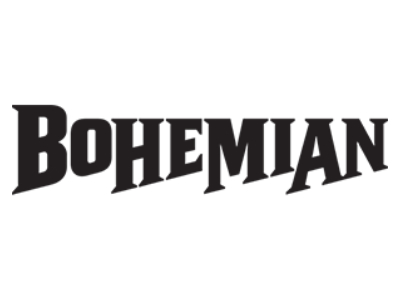January storms lashed a hilltop cattle feedlot at J Ranch in Point Reyes National Seashore. Tons of E. coli, ammonia, and nitrogen laden manure liquified and flooded downhill across a popular hiking trail, splashing into Kehoe Creek, which drains into the Pacific Ocean.
A hiker photographed the catastrophe and emailed the evidence to Park Superintendent, Craig Kenkel, and regional Water Quality Control Board manager, Xavier Fernandez.
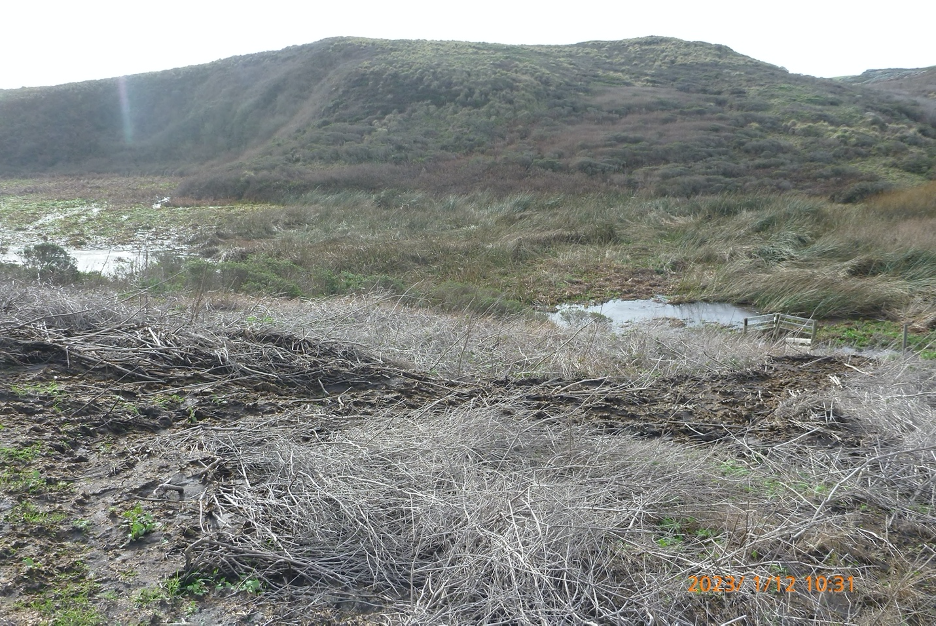
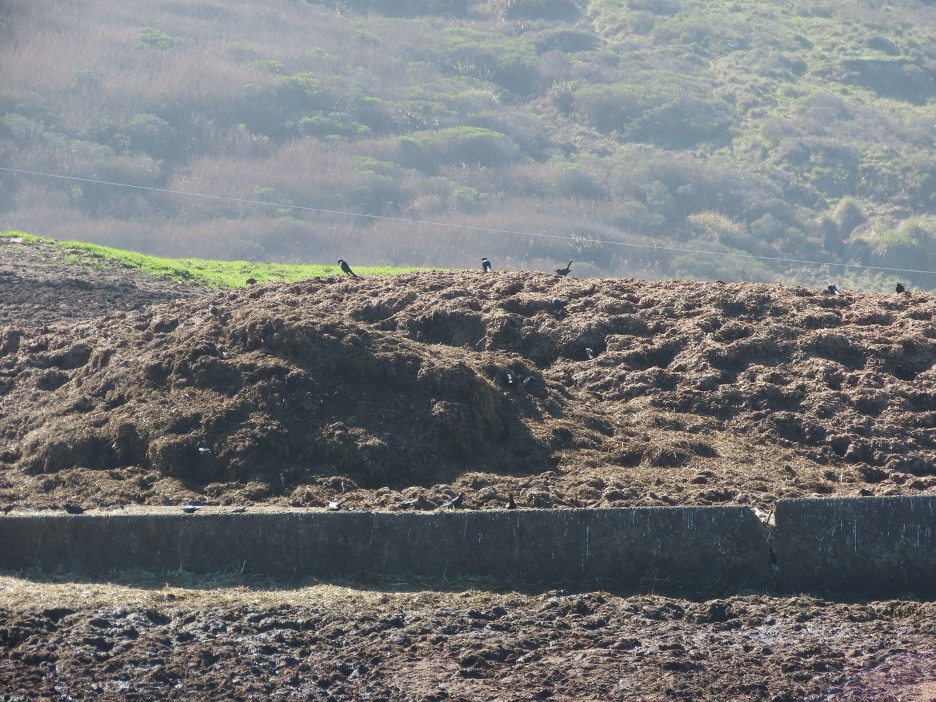
The Park Service ordered J Ranch lessees, Tim, Tom and Mike Kehoe to limit the damage. The ranchers staked a dozen burlap tubes stuffed with straw across gullies cut by the manured storm waters. In an email, Fernandez characterized the tubes as “erosion and sediment control measures.”
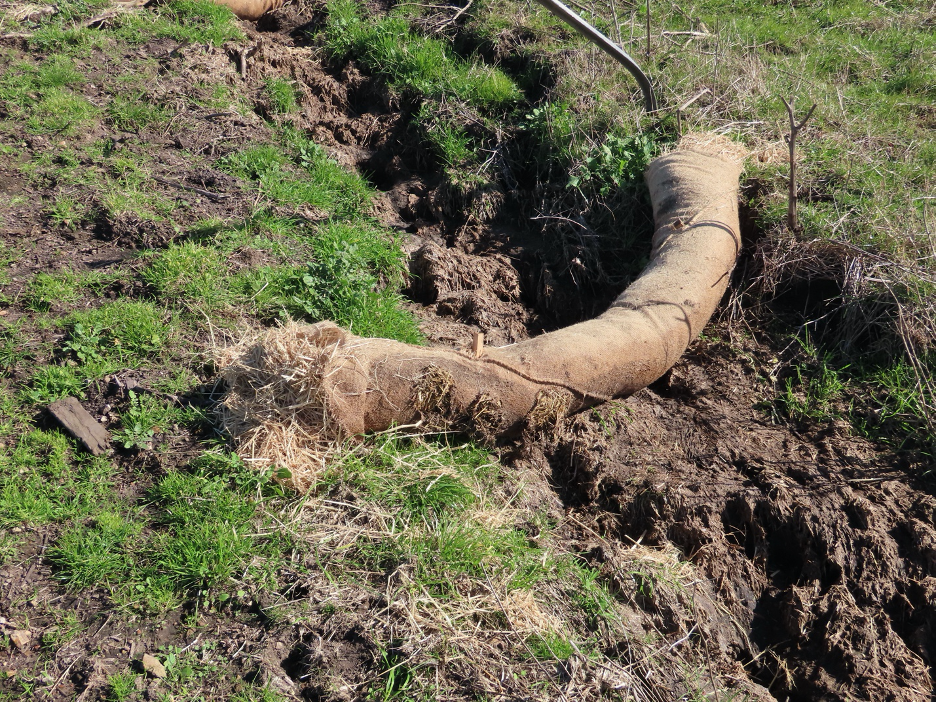
Neither Fernandez, Kenkel, nor the ranchers commented on why the mass of manure abutting a cow feeding trough was allowed to be uncontained. Seashore ranch leases and environmental regulations prohibit pollution of waterways from agricultural activities.
Fernandez initially told this newspaper, “The Park Service conducted their first week of bacteria samples during this time, and there were no indications that excess sediment or manure was directly discharged to [Kehoe] creek.” Responding to a request for the water testing data, Fernandez replied, “I have a correction to make. We do not have data from the Park Service from the monitoring that they conducted during storms in January.”
Kenkel did not respond to requests for the testing data.
Manure thickens, seals die
Recent water quality tests sponsored by Turtle Island Restoration Network reveal life-harming levels of fecal bacteria and other agricultural waste in Kehoe Creek and throughout the park. Ten miles south of Kehoe Creek, these tests registered excessive concentrations of life-harming bacteria in a stream flowing through B Ranch cow pastures onto a plastic and construction debris-strewn beach on Drakes Bay. The beach and stream are currently inhabited by pregnant elephant seals; the mammals have migrated here to give birth since time immemorial.
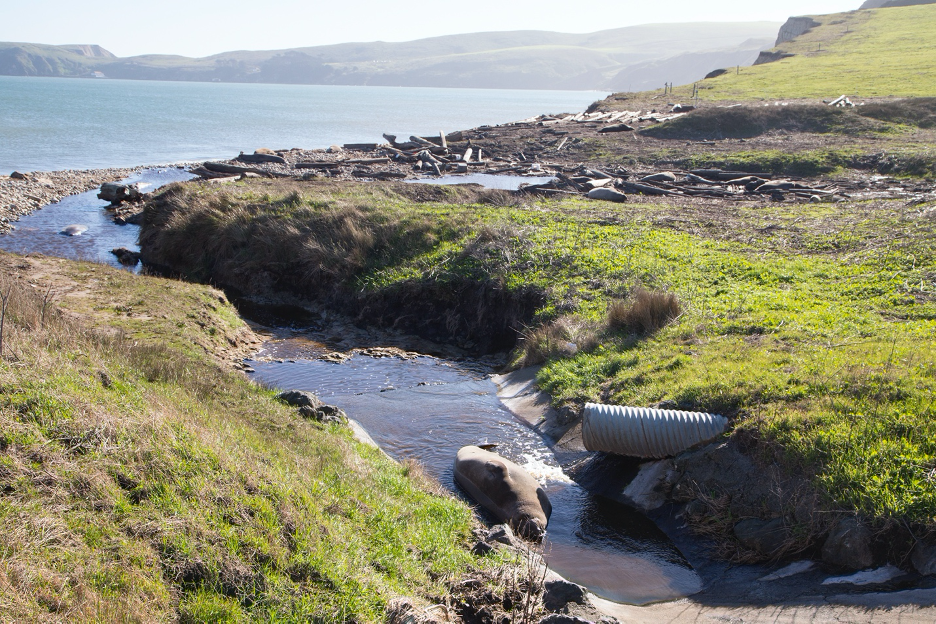
In a statement prepared for this newspaper, Greg Sarris, chairman of the Federated Indians of the Graton Rancheria, which co-manages the Park, observed, “The seals are being sickened, and even dying, as a result of excess manure flowing to their habitats.”
Sarris suggested, “The dairymen might consider building a fence to keep the seals from areas greatly affected by the pollution flow.”
On Jan. 25, Rep. Jared Huffman sent a letter to Kenkel supporting Park Service “measures to prevent the seals from hauling out or pupping in areas where there is a need to remediate water quality problems, and measures to temporarily prevent cattle from grazing in areas where the seals are present.”
Neither Sarris nor Huffman nor Kenkel nor Fernandez explained how many seals are sick and dying, nor how building more fences would help them. The agricultural pollution of the water table at B Ranch and throughout Point Reyes goes back decades; the flows cannot be stopped by wire fences.
On a brighter note, Noaki Schwartz, spokesperson for the California Coastal Commission, another agency with jurisdiction over the Seashore, commented, “Thank you for reaching out and looking into this. I checked in with our staff. We were all surprised and frankly disgusted to hear about the discharge of agricultural waste into sensitive marine areas and have been looking into everything we can do to address it and prevent it from happening again.”
“We are actively engaging with all the agencies with a relevant regulatory role to play in these areas and have spent the past week coordinating with them to figure out how best to proceed, both in the immediate and long term,” Schwartz stated.
The solution is obvious. In 2020, a National Park Service environmental study determined that “impacts on water quality would be noticeable, long term, and beneficial” by eliminating ranching from the grossly polluted Seashore park.
Despite this solid science, the Park Service, with Huffman’s legislative support, is attempting to subsidize and expand the reach of environmentally destructive cattle and dairy ranching at Point Reyes, even though the general public and many scientists are strongly opposed.
The Park Service is currently engaged in mediating a lawsuit brought by three national environmental groups petitioning to protect endemic wildlife and plants by permanently removing ecologically harmful private ranching from the Park.
According to Joseph Sanchez, an elder of the Coast Miwok Tribal Council of Marin, “The degradation of the land, and officialdom’s disregard for the ecology of Point Reyes National Seashore, has been going on since the ranchers were paid millions of dollars to leave in the 1970s and did not leave. The elephant seals were here long before our ancestors, who were caretakers of the land. The streams were clear, and the salmon were running. The Tribal Council advocates for restoring Point Reyes to its native state without the presence of ranching.”

